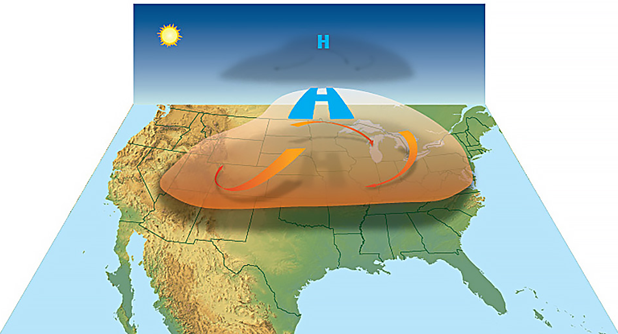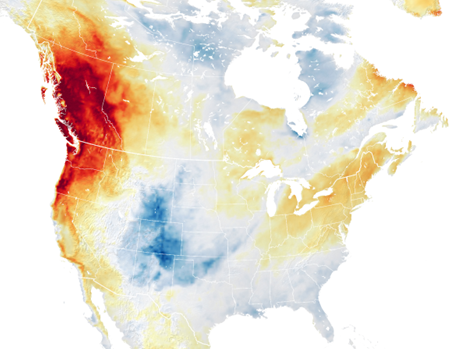What is a Heat Dome?
Dangerous hot weather has become a much more pressing issue in recent decades with the impact of climate change on our weather systems. Extreme heat that lingers over a region for days and weeks at a time can be particularly dangerous. This type of event has come to be known as a heat dome, or heat wave.
“Heat dome” is not standard scientific terminology, but it effectively describes the oppressive high-pressure atmospheric systems that cause warm air to be pushed to the surface and retained there for long periods of time. The dome traps high-pressure air in one place, like the lid on a pot. These large zones of hot air result in a combination of blistering temperatures, devastating wildfires, and drought conditions.

What Causes Heat Domes?
Normal weather pressure systems move from west to east at North American latitudes. Sometimes these systems get blocked when a jet stream weakens and breaks. When the jet stream stalls, it can result in a persistent area of high pressure.
- Jet Stream: A narrow band of strong wind in the upper levels of the atmosphere. Jet streams are caused by the earth’s rotation and the momentum that air builds up as it moves away from the equator. Each jet stream flows along a boundary between hot and cold, resulting in the polar and subtropical jet streams.

When a high-pressure area builds up within a jet stream, the air descends towards the surface and gets compressed towards the ground, forming a heat dome. Air is crowded within a smaller volume, so it is forced to heat up. The layer of high-pressure blocks the hot air from rising and prevents clouds from forming, allowing more radiation from the sun to hit the ground. Heated air that is trapped below the high-pressure system will become increasingly warmer because it is unable to escape beyond the dome.
When the ground below heat domes warms, it can dry out and become even more prone to high temperatures. Until the high-pressure system dispurses, the trapped heated air will continue to exacerbate hot conditions on the ground. Heat domes can persist for days to weeks because of this feedback cycle of rising temperatures.
Where are Heat Domes an Issue?
Heat domes have occurred throughout America and much of the world. In 1995, a wave of heat hit the Midwest which killed approximately 600 in the Chicago area. The North American heat wave of 1936 and the European heat wave of 2003 were other devastating examples of the “heat dome” phenomenon in action.
Heat domes can be particularly troubling in areas like the Pacific Northwest, hit in 2021 with the Western North America heat wave, where residents are not used to high temperatures and do not have the infrastructure to protect vulnerable populations from heat illnesses, and many homes do not have air conditioning. Providing housing, cooling centers, pools, and beaches can help alleviate the danger of high temperatures. For more information on how to mitigate heat damage, see our advice here.

Conclusion
Heat dome is part of the new vocabulary for describing the quickly changing and dangerous effects of climate change on our weather systems. Dry soil and limited vegetation are the perfect conditions for heat dome systems to form and perpetuate themselves.